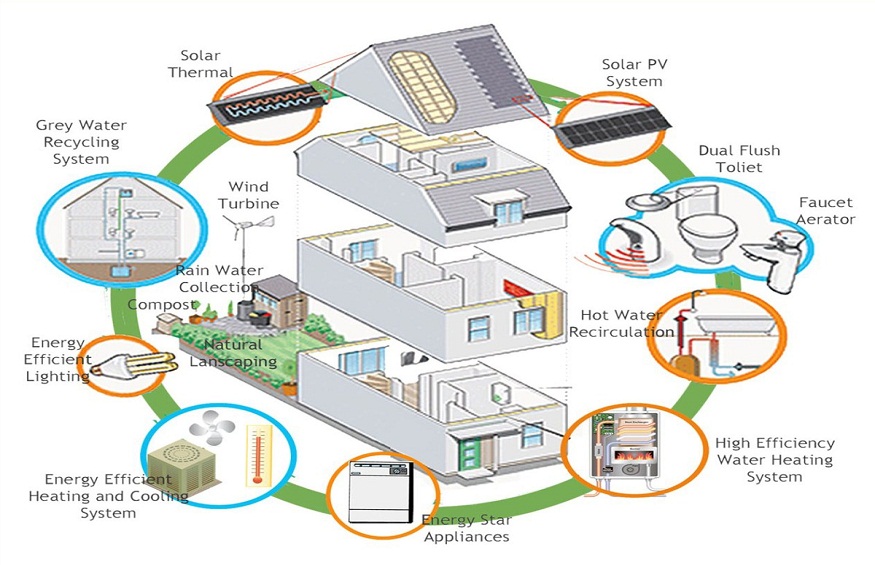Managing your home’s heating and cooling is one of the most important things you can do to maintain an energy-efficient house. After all, up to 55% of your home’s energy consumption may have to do with heating and cooling, which means if you can reduce your heating and cooling needs, you may be able to significantly reduce how much energy you’re using. Here’s what you need to know about creating a more energy-efficient way of home heating and cooling.
 Guide to Efficient Heating and Cooling Created By: Foundation Recovery Systems
Guide to Efficient Heating and Cooling Created By: Foundation Recovery Systems
Where Is Your Home Losing Energy?
There are certain areas where it may be more common to see issues with losing energy. These so-called “energy vulnerabilities” depend very substantially on each individual home. However, there are a few places within your home where it may be more common to see issues with losing energy in many different homes.
- Vent Fan
- Dryer Vent
- Duct Register
- Plumbing Vent Stack
- Crawl Space
- Duct Register
- Doors
- Sill Plate
- Top Plate
- Windows
Almost certainly, your home won’t have a problem with all of these areas. At the same time, your home may have some unique energy vulnerabilities that can cause problems in an area not listed. The best option is for you to talk to an expert and ask questions about your home’s unique energy issues and problems.
Can You Really Improve Your Home’s Energy Efficiency?
Improving your home’s energy efficiency can seem extremely difficult, but it’s actually not as complicated as it might seem at first. There are a number of things that you can do right now to make your home more energy-efficient. Here are a few of the things you can do that might make your home even more energy-efficient.
- 5-30%: Sealing Air Leaks With Caulk, Spray Foam, and Weather Stripping
- 10%: Using a Programmable Thermostat to Use Less Energy While Sleeping
- 12-33%: Installing Storm Windows
- 15%: Installing an Energy Star Gas Furnace
- 20%: Crawl Space Insulation and Encapsulation
Some of these things have a wide range of efficacy. For example, you’ll see that sealing air leaks can benefit your energy consumption by as little as 5% or as much as 30% on average. That’s because it all depends on whether you’re having problems in that arena in the first place.
Why Should You Switch Over to an Energy-Efficient Setup?
Your personal reasons for switching over to an energy-efficient setup may be extremely varied. There are all sorts of reasons people gravitate toward energy-efficient setups over setups that have less energy efficiency, and it might be for any number of underlying reasons. That includes all of these potential reasons for switching.
- Updates Can Pay for Themselves Over Time in Reduced Energy Costs
- You May Be Able to Claim a Tax Credit for Part of Your Home Insulation Costs
- Energy Efficiency Is Good for the Environment
- Your Living Spaces May Be More Comfortable Overall
As you can see, there are many different angles that you may approach your energy-efficient move from. This may be because energy efficiency is better for your wallet, because energy efficiency is better for the environment, or even just because energy efficiency makes your living spaces more comfortable. Regardless of why you’re doing it, there’s always going to be a good reason for it.
Conclusion
The process of switching to an energy-efficient setup doesn’t have to be complicated. Energy-efficient also doesn’t necessarily mean less effective. It’s totally possible to have an energy-efficient setup that’s even more effective than the less-effective setup you currently have. Regardless of why you choose to switch or what you end up needing to switch to, there are a variety of setups that you can learn about and implement. Talk to an expert to learn more about your options for energy efficiency in your home.




